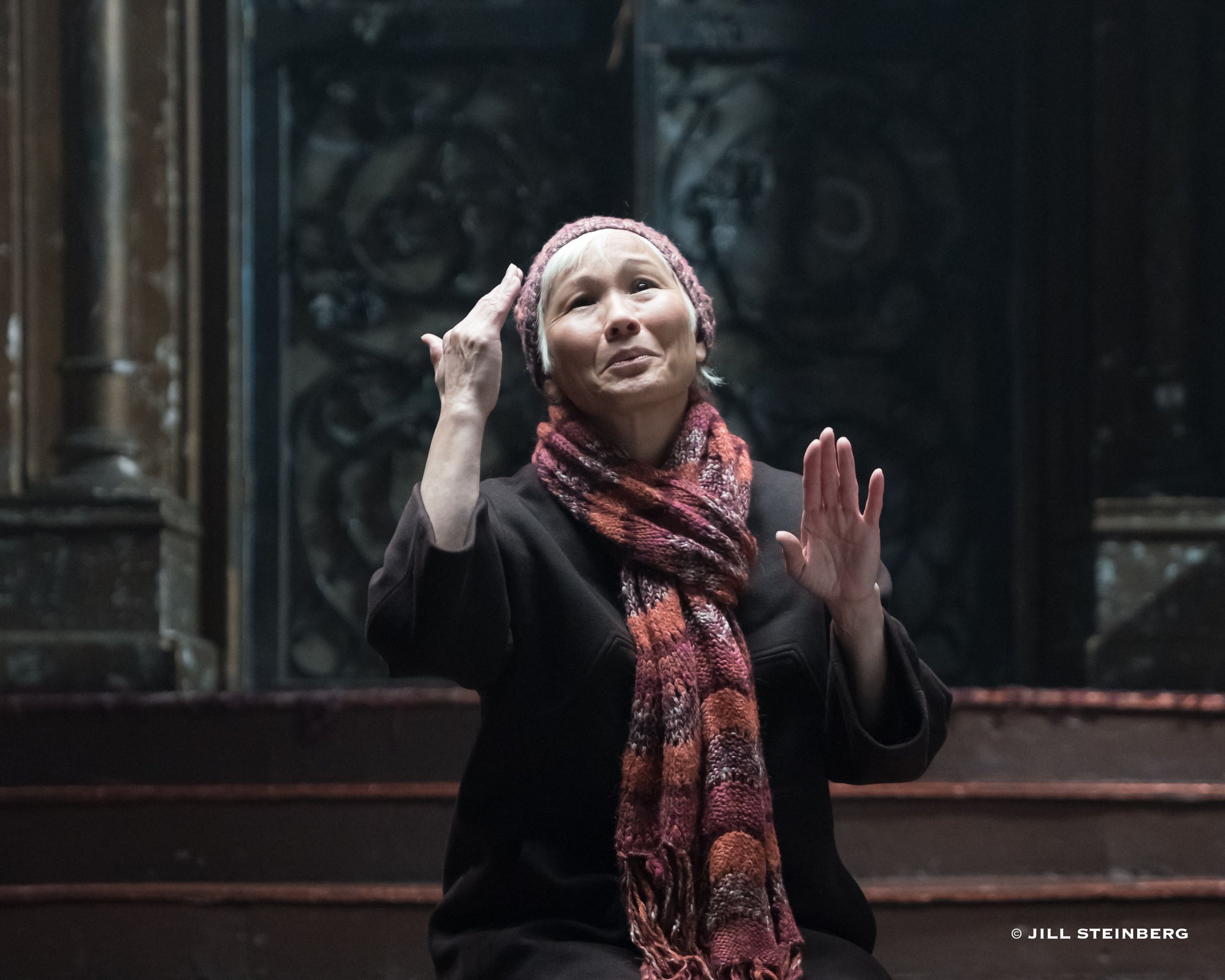The fifth of twelve Opera on Film events (and second event I attended) of Opera Philadelphia’s Festival O22 was titled “dwb (driving while black) + Soul (Signs): Opera”. The advertised program was opened by a short film about Opera Philadelphia’s “Resonant Philly” project; that performance was held in May of this year. The program was developed by OP with Art Reach and Music: Not Impossible. The goals were to work towards making music more accessible and expanding the experience of sound for all, with the overriding goal of bringing people together. The project involved developing wearable technology that allowed participants to sense and adjust sound experienced as music vibrations being transmitted to different parts of their bodies - hands, legs, and torso. The immediate objective was to allow deaf and hearing people a more immersive way to experience sound and to allow people with autism more control over these sounds to adjust to their neuro atypical needs. Opera Philadelphia reports that plans are underway to hold a second Resonant Philly event in 2023. This lead-in paired well with the Soul Signs portion of the night’s event.
Film still of Karen Slack in dwb (driving while black). Image courtesy of Opera Philadelphia.
dwb (driving while black) is a forty minute film adaptation by Du’Bois A’Keen and Camry A’Keen of a one-woman opera by composer Susan Kander and librettist Roberta Gumbel. The work was produced by Urban Arias, a company devoted to commissioning and presenting new chamber operas in the DC area. The piece is a showcase for soprano Karen Slack who brings extraordinary vocal skills, charm, and pathos to the role. The theme of the human cost of racial prejudice unfolds by having Ms. Slack sing through several scenes calling to mind black men abused during traffic stops and communicating the impact on mothers who love and worry about their ”beautiful brown boys”; when they see you, the mother sings, they won’t see “you”. The vocal presentation is augmented by three dancers robed in white with their faces covered, with musical support by cello and percussion. If one thinks of it as a film that merges ballet and art song, a case can be made that merging of the artforms was not as effective as it might have been. My personal response in remembering this opera is to remember the singing and to remember the dancing, but not so much to remember the combination; perhaps the white body coverings of the dancers pulled the dance into contradistinction for me from the story? dwb (driving while black) is an excellent, connoisseurs’ art piece that will likely only attract a small audience, despite its excellence and the overarching need for its message to be widely felt and appreciated.
“Soul (Signs): Opera” is a collection of three films, each a seven-minute, fully-staged and acted scene from an existing opera but performed by actors using American Sign Language (ASL); the vocals are supplied by singers off-camera, and subtitles in English are provided. The collection was created by Up Until Now Collective and commissioned by Boston Lyric Opera, Opera Omaha, Opera Columbus, and Portland Opera; the films are currently available for viewing for free at Boston Lyric Opera’s operabox.tv. The goal was to explore “new ways to enhance the artistic expression of opera” using ASL “as both a medium and a new language through which to interpret opera and bring it to new audiences”.
Photo 1: Film still of actress Monique Holt in “His Name Is Yan”. Photo 2: Film still of “Papageno & Papagena”. Images courtesy of Opera Philadelphia.
“What Makes a Man?” is a scene from Terance Blanchard’s jazz opera, Champion. The scene shows boxing champion Emile Griffith struggling with what it means to be a man while confronting his homosexuality. Branden Kazen-Maddox signs the role of Griffith while baritone Markel Reed sings the aria. I thought the addition of signing to this scene significantly enhanced my perception of Mr. Griffiths anguish in this scene, even though I don’t read sign language, an outstanding performance by Mr. Kazen-Maddox..
“His Name is Yan” features a scene from Breaking Waves by composer Missy Mizzoli and librettist Royce Vavrek where the tragic central character Bess pleads with church elders to accept the love of her life, an outsider, into their community. This film brought back fond memories of Opera Philadelphia’s 2016 premiere of this outstanding opera. Bess is signed by actress Monique Holt and the aria is sung by soprano Kiera Duffy, who premiered the role with OP. Wow, it took me back there!
“Papageno &Papagena” – do I really need to say who composed this one? Yes, the opera is Mozart’s “The Magic Flute”. The scene is done as a queer version of this popular duet, with feathered actor Dickie Hearts signing as Papageno and feathered actor Branden Kazen-Maddox signing as Papagena. Papageno was sung by baritone John Taylor Young and Papagena was sung by countertenor Jordan Rutter. If you can watch this film and not be charmed, I don’t know what to say. Well, I will say it is a great demonstration of the power of music; it was like the lights came up and the show came on, and the magic of Mozart’s music brought us together.
I thought these were excellent films with fine acting, singing, and staging. I would have been happy to have each turned into a complete opera recording for viewing, including the same performers. This sampling was great.
The Fan Experience: The Opera on Film section of Opera Philadelphia’s Festival O22 ran September 27 to October 2 at the Philadelphia Film Center in Center City. Matinee and evening showing times were utilized, but each film was only shown once. The schedule can be found at this link. COVID vaccinations and masking are no longer required, but are strongly recommended; some people were masked and some were not.
I will close with a comment about the title I chose for this report: “Art and Social Issues Night”. The choice reflects my ambiguity about whether the works presented should be grouped this way. Opera Philadelphia is recognized for its efforts to address disparities of many types, and certainly other films in Opera on Film addressed social issues. I applaud OP drawing attention to these issues by having this program, but I can’t help but wonder if they might have received greater attendance if included as part of other groupings. I have no answer, only discomfort. In a sense, we should all be required to watch these films until we test positive for understanding, but they also deserve to be viewed simply as works of art among other works of art. Regardless, kudos to Opera Philadelphia for including them in Opera on Film at O22.



